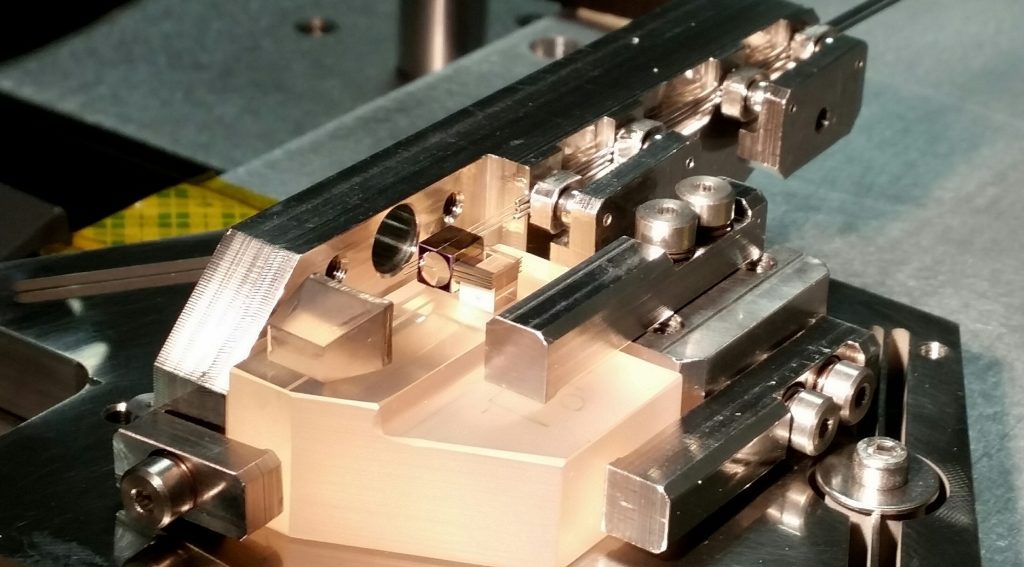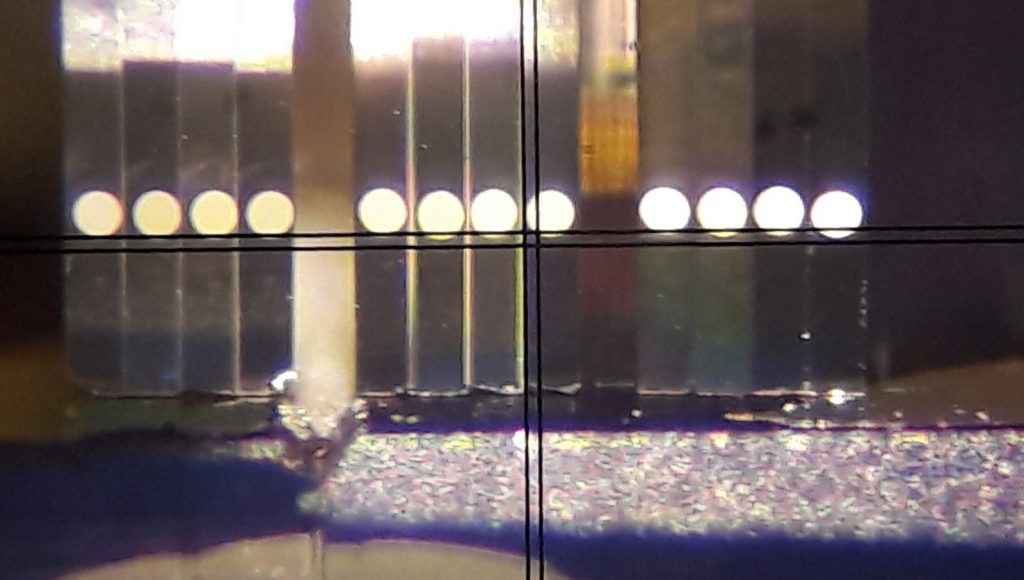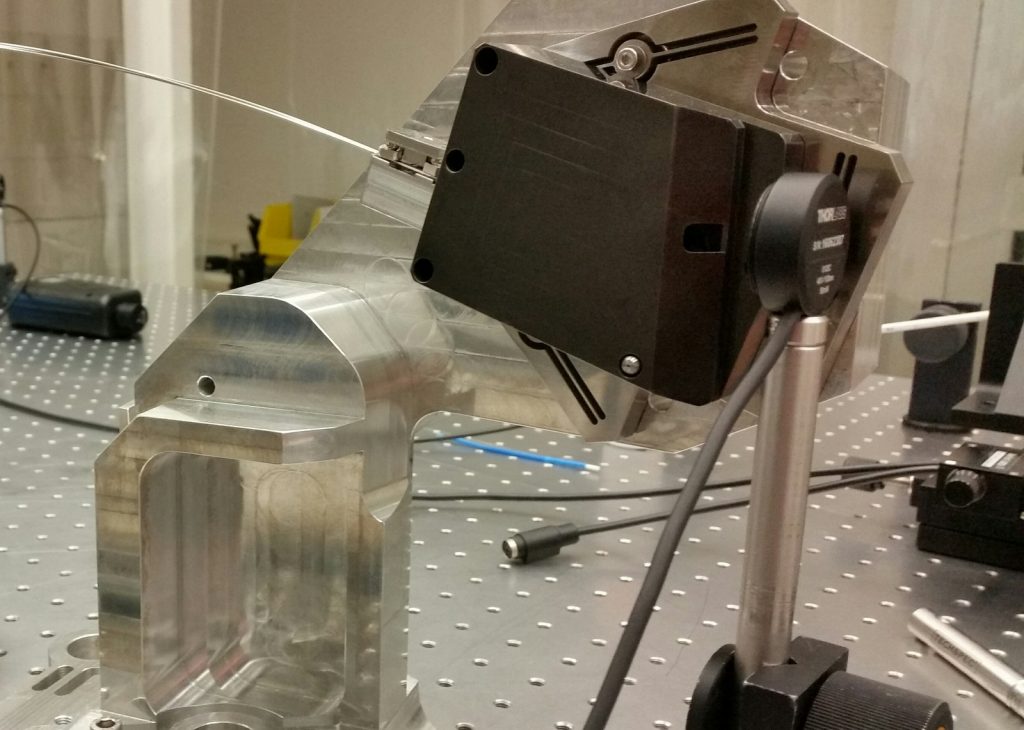2017 January: SPIRou pupil slicer delivered at IRAP / OMP
The first pupil slicer of the SPIRou spectrograph was delivered at IRAP / OMP
To reach the nominal spectral resolving power without losing light at the spectrograph entrance, SPIRou uses a pupil slicer to split the image coming out of the triple 90-µm octagonal fiber (at beam aperture f/4) into a series of 12 images (3 sets of 4 images, with one set per fiber) aligned in a 1.5-mm slit that feeds the spectrograph (at beam aperture f/8).

This slicer consists in 3 main components:
- A small 8-mm Zerodur parabolic collimating mirror;
- A pupil-slicing mirror made of 4 flat mirror sections, tilted with respect to each other, and slicing the pupils of each fiber into 4 equal sectors;
- A stack of 12 thin mirrors of thickness 0.11 mm (one for each pupil sector of each fiber), also adequately tilted with respect to each other.
After merging the pupils of all 3 entrance fibers onto the pupil-slicing mirror, the collimator reimages the beams from the individual pupil sectors of each fiber onto a dedicated mirror of the mirror stack, oriented so as to project the corresponding pupil sector onto the spectrograph grating.
In addition to being extremely compact, this pupil-slicing device ensures that all slices of a given fiber are identical; these are two key assets (with respect to, e.g., more conventional image slicers) to ensure that the slicing device induces minimal image variations at the spectrograph entrance and complies with the stringent stability requirements of SPIRou.
The slicer was manufactured by Winlight Optics, in South-Est France, and results from an innovative R&T process. Several construction steps turned out to be true technological challenges, in particular the bonding, polishing, gold coating and final alignment of the mirror stack. Following preliminary tests suggesting nominal performances, final acceptance tests are ongoing under the supervision of Yoan Micheau at IRAP / OMP. A second further optimized pupil slicer is currently under construction at Winlight Optics, to be delivered at IRAP / OMP in a few months.





